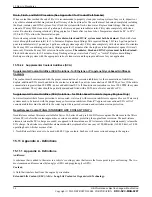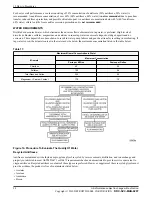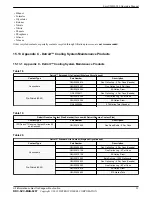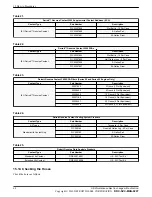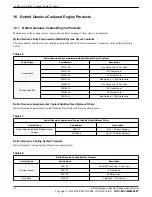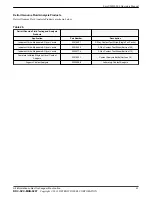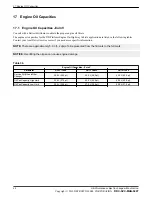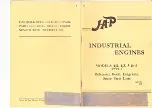
Drain, Flush, and Refill Procedure (See Appendix C for Product Part Number)
When coolant has reached the end of life, it is recommended to properly clean your cooling system of any scale, deposits or
any other contaminants that may reduce the efficiency of the heat transfer. The coolant must be drained completely including
the block, radiator, and HVAC system. Next, flush the system with fresh, clean water. Replace drain fittings. Mix required
amount of Penray 2010 cleaner in a 5-gallon pail of water and pour into radiator inlet. Fill system completely with clean
water. Re-circulate cleaning solution by idling engine for 2 hours after top hose is hot. Temperature should be 88° to 95°C
(190 to 203ºF) to allow the thermostat to open.
Drain cleaning solution from the system.
The radiator, block and HVAC system must both be drained.
Flush with clean
water (through the radiator inlet) for 3 to 5 minutes. Replace drain fittings. Mix required Penray 2011 in a 5-gallon pail and
pour into radiator inlet (1 pound per 4 gallons cooling system capacity). Fill system completely with clean water. Re-circulate
the Penray 2011 conditioning solution by idling engine for 15 minutes after the top hose is hot (thermostat opens if it wasn’t
removed). Drain the Penray 2011 solution from the system.
The radiator, block and HVAC system must both be drained.
Flush with clean water for 3-5 minutes. Keep flushing as long as water looks “rusty” or “turbid.” Replace drain fittings.
Recharge cooling system with the appropriate ratio of clean water and the proper antifreeze for your application.
15.10.4.2 Supplemental Coolant Additives (SCA)
Supplemental Coolant Additive (SCA) Solutions- for Ethylene or Propylene Glycol-based Antifreeze
Coolants
The coolant must be maintained with the proper concentration of corrosion inhibitors. As the concentration of inhibitors
deplete, additional SCA must be added to the coolant as indicated by a nitrite concentration of 900 PPM, or less. If the nitrite
concentration is greater than 900 PPM, do not add additional SCA. If the nitrite concentration is above 3200 PPM, the system
is over-inhibited. The system should be partially drained and filled with a 50/50 mix of water and EG or PG.
Supplemental Coolant Additive (SCA) Solutions - for Water-based Coolants (Legacy Engines Only)
In warm climates where freeze protection is not required, water only with corrosion inhibitors is approved for use. Water-only
systems need to be treated with the proper dosage of corrosion inhibitors. Detroit™ approved conventional SCA or OAT
corrosion inhibitors must be added to the water to provide required corrosion and cavitation erosion protection.
Need-Release Coolant Filters (STANDARD LIFE COOLANT ONLY
1
)
Need-Release coolant filters are available for Series 50, Series 60 and pre-2016 DD series engines. Membranes in the filters
release SCAs before the coolant approaches a corrosive condition, protecting the engine from corrosion. The need-release
elements release the SCA charge as needed, as opposed to the maintenance SCA elements, which instantaneously release the
SCA charge. Need-release coolant filter elements should be replaced after one year or 100,000 miles (160,000 km), or 3,000
operating hours, whichever comes first.
1. Need-Release filters are not to be used with ELC type coolants. Such use will cause serious damage to the engine.
15.11 Appendix A - Definitions
15.11.1 Appendix A - Definitions
Antifreeze:
A substance that is added to the water in a vehicle’s cooling system that lowers the freeze point to prevent freezing. The two
most common antifreezes are ethylene glycol (EG) and propylene glycol (PG).
Coolant:
A fluid that transfers heat from the engine by circulation.
Extended Life Coolant (ELC): AKA - Long-Life Coolant or Organic Acid Technology:
15 How to Procedures
56
All information subject to change without notice.
Copyright © 2019 DETROIT DIESEL CORPORATION
DDC-SVC-MAN-0207















